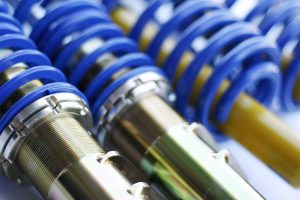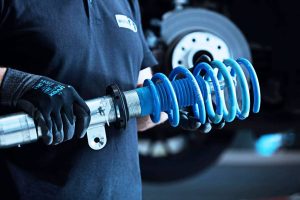When you glide smoothly over a bumpy road, rarely noticing the cracks or dips beneath your wheels, you’re experiencing the subtle brilliance of shock absorbers at work. While tires and suspension springs play their part, shock absorbers are the unsung heroes in reducing road vibrations, minimizing cabin noise, and enhancing overall ride comfort. But how do they actually work?
In this article, we’ll delve into the science of shock absorbers, exploring how they absorb vibration and noise, how various designs affect comfort, and why high-quality shock absorbers are essential for a pleasant and controlled driving experience.

What Are Shock Absorbers?
Shock absorbers, also known as dampers, are hydraulic (or gas-charged) devices designed to control suspension movement. When your car goes over a bump, the suspension compresses and then rebounds. Without shock absorbers, that energy would make your car bounce uncontrollably.
| Component | Function |
|---|---|
| Piston | Moves inside a cylinder to create hydraulic resistance |
| Hydraulic Fluid | Transfers force and dissipates energy as heat |
| Cylinder/Tube | Houses the piston and fluid |
| Valve System | Controls flow of fluid to manage compression and rebound |
Shock absorbers don’t support the vehicle’s weight — that’s the job of the springs. Instead, they control and dampen the movement of those springs.
How Shock Absorbers Reduce Vibration
Every road imperfection — a pothole, speed bump, or uneven pavement — creates vertical motion. The suspension absorbs this, but the resulting energy must be controlled. That’s where the damping effect of shock absorbers comes into play.
Damping Mechanism:
-
Compression Stroke – When the wheel hits a bump, the shock absorber compresses.
-
Rebound Stroke – As the spring pushes back, the shock absorber slows the upward movement.
Both strokes involve fluid being forced through valves, converting motion energy into thermal energy that dissipates into the atmosphere — effectively absorbing vibration.
| Vibration Source | Shock Absorber Action |
|---|---|
| Road bumps | Reduces upward motion and bounce |
| Body roll during turns | Stabilizes side-to-side movement |
| Acceleration/deceleration | Prevents excessive pitch and dive |
| Tire chatter | Controls fast oscillations |
Shock Absorbers and Noise Reduction
Vibrations are often accompanied by structural noise — a low-frequency rumble or a harsh, high-pitched squeak. Shock absorbers reduce this noise by damping the vibrations before they reach the cabin. Quality shocks, especially gas-charged or electronically controlled types, excel at eliminating the mechanical noise that travels through the chassis.
Common Noise Sources Shock Absorbers Help Mitigate:
-
Rattling from loose suspension parts
-
Clunking from harsh road impacts
-
Tire slap on uneven surfaces
-
Buzzing from rough pavement or cobblestones
Proper damping ensures that these vibrations are absorbed or softened before becoming audible to passengers.
Types of Shock Absorbers and Their Comfort Performance
| Type | Comfort Level | Best For |
|---|---|---|
| Twin-Tube | Moderate | Everyday driving, light road imperfections |
| Monotube | High | Performance driving, better heat dissipation |
| Gas-Charged | Very High | Superior response and reduced aeration |
| Electronically Adjustable | Optimal | Adaptive ride comfort across conditions |
| Air Shocks | Customizable | Load-leveling and smooth luxury ride |
Each type offers different characteristics in terms of vibration control, heat management, and responsiveness.
Factors Affecting Ride Comfort
Several vehicle characteristics influence how effective your shock absorbers will be at controlling vibration and noise:
| Factor | Impact on Ride |
|---|---|
| Shock quality | Poor-quality shocks can’t control damping effectively |
| Suspension tuning | Stiff setups transmit more vibration |
| Vehicle weight distribution | Imbalanced load increases body roll and bounce |
| Tire type and pressure | Low-profile or overinflated tires transmit more impact |
| Road conditions | Rough roads test the limits of the damping system |
Signs Your Shock Absorbers Are Harming Ride Comfort
Shock absorbers wear down gradually. When they fail to control movement and vibration effectively, ride quality suffers.
Warning Signs:
-
Excessive bouncing over bumps
-
Nose diving when braking
-
Clunking or rattling sounds
-
Poor steering stability
-
Increased cabin vibration
-
Uneven tire wear
Maintenance Tips for Ride-Comfort Longevity
| Task | Recommended Frequency |
|---|---|
| Inspect shocks for leaks | Every 10,000–20,000 km |
| Test bounce and rebound | Every oil change or tire rotation |
| Replace shocks | Every 60,000–90,000 km (sooner for rough roads) |
| Check mounting bushings | Alongside shocks; worn bushings transmit noise |
| Use OE or high-quality parts | Essential for maintaining comfort and control |
Upgrade Recommendations for Better Comfort

If you’re experiencing poor ride quality, consider upgrading:
-
From twin-tube to gas-charged monotube
-
To adjustable or adaptive suspension systems
-
Add strut mounts and new bushings during shock replacement
-
Choose premium brands built for comfort, not just durability
Conclusion
Shock absorbers are more than just performance components — they are central to your driving comfort and noise insulation. By managing how vibrations travel through your vehicle, they prevent both physical discomfort and annoying cabin noise.
If your ride feels rough, noisy, or unstable, don’t ignore it. Your shocks might be trying to tell you something.
buy Shock Absorbers online — Find the perfect solution for quiet, vibration-free driving. Whether you need daily comfort or heavy-duty damping, the right shocks make all the difference.